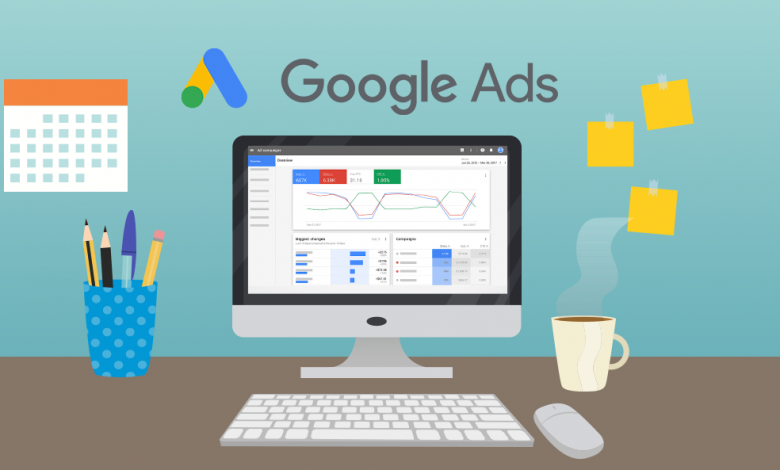Track and control Google Ads and website stability

No website can expect to succeed without advertising on Google. At the very least, this is because a website must be able to be found through more than just a direct link. That is why any business, even the smallest, or just a website tries to get the most out of the Google Ads system. With this system, even a small business will feel the freedom to choose advertising formats. In addition, everyone will be able to leverage even an obscenely small budget to achieve a high volume of conversions.
How do Google Ads tools work?
When a user searches for a query, Google shows ads relevant to the user based on the keywords that were used in the query. Advertisers who want their ads to appear on the results page set bids for keywords, which will participate in an internal system auction between advertisers with the same keywords. Whoever has a better ad with a higher bid will be shown higher in the search query. Depending on the value of the bid for keywords, the ads will occupy different positions.

In addition to the bid, Google also takes into account the relevance and quality of your ad and website. Therefore, even if you have the highest bid, but the ad is poorly written and the landing page does not match the description in the ad, the likelihood of your ad showing at the top of Google’s search results is extremely low.
Advantages of Google Ads advertising
Google Ads is one of the primary and most powerful methods of advertising on the Internet, and the main advantage is that search advertising brings your business the “mature” customers who are most ready to make an order. It is only seen by visitors who are searching for what the advertiser is offering. Using search engine advertising allows you to get new customers on the first day of launch, and the effectiveness of this channel is one of the highest.
Using Google Ads, you can decide which search phrases your ad will appear for. If you compile a list of search phrases with commercial links, you will be shown to users who are most likely willing to make a purchase or order a service and thus avoid inefficient impressions and costs.
You can specify the geographic location where you want your ad to show. For example, you can specify in the settings that your ad will be shown only to people who are in the required city, district or only within the required radius (for example: 5-10 km from your company).
With Google Ads you can show ads to a user as soon as his need has been formed. For example, your business is delivery. A user who wants to order enters the necessary query into the search bar and instantly receives relevant ads in response, which will allow him to make an order without wandering through the search results.

Ways not to overpay for ads with Google Ads
First of all, Google Ads is convenient because you can quickly change the settings and focus on maximum efficiency. Elastic strategies are also available that allow you to place ads with any budget. Google uses a pay-per-click (PPC) advertising model, which means that you only pay if someone is interested in your ad and clicks on it.
The cost per click on an ad depends on the competitive rates for the keyword that caused the ad to show up. You can specify the rate limit per click on your ads, and set a maximum daily budget. This is a very positive point, which is very different from traditional advertising.
With Google Ads, you can track and analyze a variety of performance metrics, such as how many people see your ad, how many clicks are made on the ad, or the number of targeted actions on your website. By keeping track of how your ad is progressing, you can quickly make changes to improve your campaign.
Why track your Google Ads campaign and how?
By launching an advertising campaign, website owners strive to ensure that nothing interferes with their work. But even the most reliable websites become unavailable from time to time. And Google Ads will block ads because the advertised website will not be crawled on the system.
In addition, the Google ad parser blocks ads if the web page has errors or is misconfigured. But Google only pauses ad campaigns on websites if they are completely inaccessible to users. Or if their access speed is very slow. A large number of small website crashes go unnoticed by Google. For example, if a website is available but not working as expected, Google does not pause its ad campaign. This will lead to large losses due to the fact that users will click on empty links.

Even a short-term failure can stop an ad campaign for a long period. At the same time, restoration of an advertising campaign in this case is possible only manually. Because this can only be done after the ads have been reapproved by the Google team. And this, in turn, takes a lot of time. Because, firstly, the webmaster needs to localize problems in time. Second, the webmaster needs to send a recovery request. And thirdly, the webmaster should wait for its execution. And time is money for every website owner.
Website monitoring tools for Google Ads precise fail-safe control
With all of the above in mind, every website owner or webmaster needs a robust set of tools like HostTracker to track down issues and prevent them from happening. You can easily set up your own system to track your AdWords campaigns. And it will automatically pause your Google Ads subscription. And when the webmaster restores the stability of the website, this system will bring the advertising campaign back online.

Overall pros and reasons for website monitoring
Even a short-term unplanned outage or slowdown of the website leads to significant financial losses in addition to overpaying for a non-working advertising campaign. New customers stop coming. Moreover, old users and customers start leaving almost instantly. So it is very important to ensure the smooth operation of the website, its stability and high speed of access. Thus, the website owner or webmaster must ensure that the website is constantly monitored.
Of course, this is not an easy task. Primarily because you’ll need to check a lot of things – from SSL and domain expiration up to access speed, server stability and database integrity. Therefore, no matter who is monitoring the website. Because it is better to use a complete set of tools, such as the HostTracker service.




